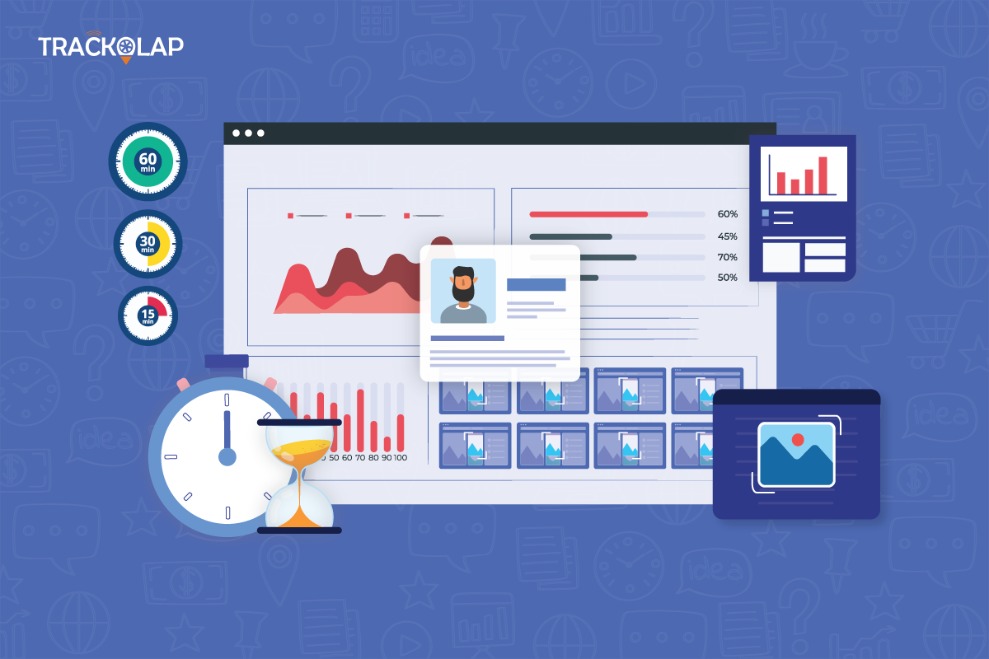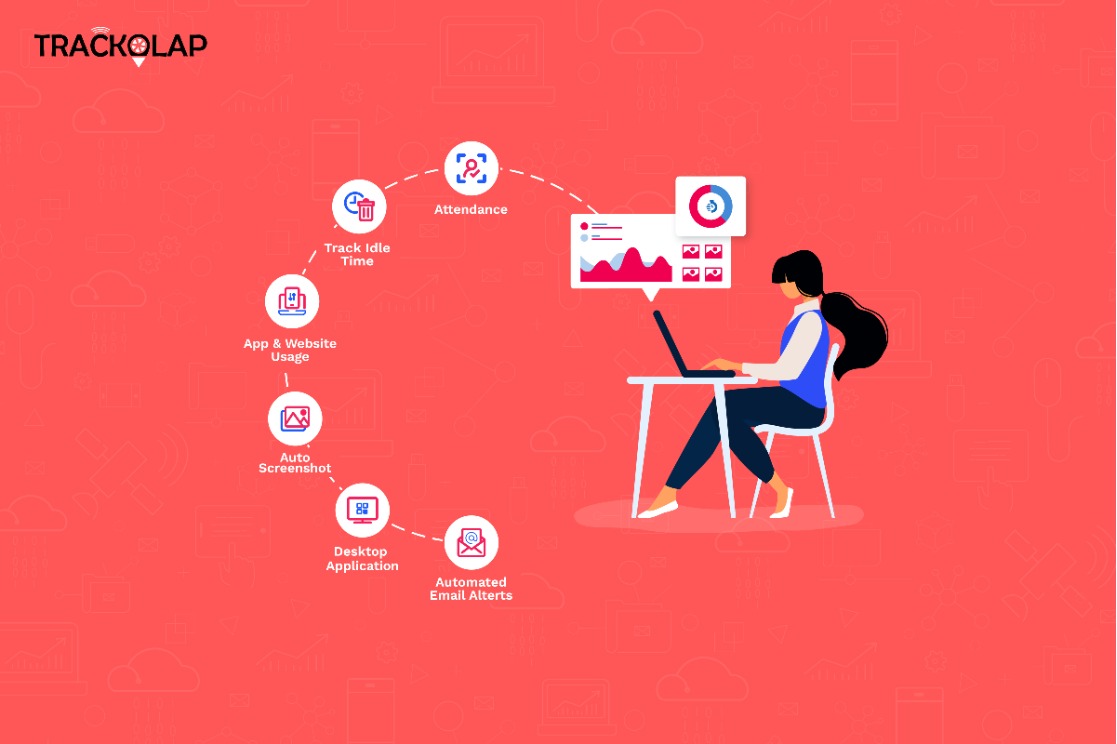
How to Set Better Screen Time Boundaries for your Remote Employees
With remote work culture advancement, your employees' screen time has dramatically increased. They have to spend more time in front of their laptop or mobile screen than they earlier used to do. The impact of increased screen time can be observed on the mental and physical health of your employees.
Now, you can’t completely cut screen time out of your employees' lives, but you have to take some actions to set an ideal screen time for them. If your employees are healthy, only then can they effectively work for you.
Therefore, in this post, we will discuss the impact of increased screen time and tips to limit screen time for your remote team.
Impact of Increased Screen Time on Remote Employees
Averagely, 56% of employees spend 4-10 hours on devices and 34% of employees 8-14 hours daily on-screen. Today, when employees are spending all day in front of the blue light screen, it is affecting them in multiple ways, such as:
Screen Fatigue: Headache and eye irritation are the two common problems that increased screen time has ignited. Around 65% of employees have reported eye strain, eye irritation, dryness, fatigue, and blurred vision problems due to prolonged screen time, which has eventually affected their productivity.
Disturbed Sleep: Many studies have shown how too much exposure to blue light can lead to insomnia and sleep disturbances. When employees are spending an extended amount of time under blue light, it surges the production of a hormone named melatonin that disturbs sleep patterns and other body functionalities.
Impaired Brain Functionality: According to Psychology Today, excessive screen time can impair brain structure and functionality. It can reduce white matter’s ability to communicate, increased cravings, and poorer overall cognitive performance.
Sedentary Lifestyle: When your employees are all day coped with technology, it can inspire sedentary behavior in them. They become socially distant and develop health problems like obesity, diabetes, high blood pressure, chronic heart diseases, etc.
The impact of screen time can be observed from imbalanced personal and professional to your team's overall behavior. Therefore, you should focus on setting ideal screen time for your remote team to protect them from digital distress.
How to Set Screen Time Boundaries for Remote Employees?
During the lockdown, the TrackOlap team has smoothly worked from home and delivered more results than ever before. Do you know why? Because we have prepared an ideal screen time structure using our smart portal.
We didn’t leave our employees alone with their laptops to work—no, we stayed with them at every low and high point to constantly churn their productivity juices. Based on our experience and ability of our software, we have made remote working seamless. And, you can also do that by following our how to set screen time boundaries guide:
Scheduled Frequent Breaks
When you are engrossed in work, you won’t realize where time flies. However, when you spend straight two or three hours in one position under blue light, it can tire you out quickly. Therefore, it is advocated to take a 10-15 minutes break frequently.
In-office, you might have already set lunch and tea break time for your team. You just have to use the same format and send reminders to take a break after consecutive intervals to your remote employees.
Your employees can use the start break button on our software when they are taking a break and press the close button when they are back from break. This way, you can maintain your individual employee’s break log sheet and ensure whether they are taking sufficient breaks or not. You can also prepare a break time table for your team so that you can monitor their productivity in a better way.
Effective Manage Projects
The majority of your employees' time is spent on checking emails, scheduling meetings, coordinating with clients, and waiting for your feedback. So, by eliminating all the unnecessary tasks from your employees' list, you can easily reduce their screen time.
First of all, we suggest that you should effectively manage projects assigned to your workers. We assign jobs to our individual employees through our task management dashboard along with a timeline and other vital instructions to complete them. Once an employee has completed the task, the work status will be automatically changed to complete.
However, if an employee is running behind schedule, we send them alerts to complete the task on time and ask if they require any assistance. When employees request assistance from management, the concerned professional is immediately intimidated by the platform.
The entire process moves so organically and quickly that employees have to spend less time on screen and stay more focused on work. Our team has accomplished multiple projects in 2020 by managing and monitoring each task through a centralized dashboard. So, this our tried and tested tip to limit screen time.
Define Priorities
If you hand over a mile-long task list to your employees, it will definitely overwhelm them and take up lots of time to streamline the task list. Instead, you should assign tasks according to the priority level so that your employees can complete priority work first.
Suppose you have assigned two tasks to your employees—make a sales video call to Mr. A who is going abroad the next day and prepare the past month's sales report next week. In this example, the first task is priority one as the client is going abroad, but if you don’t define that to your employees, how will they know which task is urgent?
Now, assume your employee spends all day preparing a sales report, which isn't a priority. And when the employee was about to wrap his or her day, you ask them to video call Mr. A on priority; this will increase the employee screen time.
Thus, if you define priorities for your employees, they can schedule their work accordingly and maintain a standard screen time. With priority-based work allotment, you can dramatically reduce remote work chaos and better streamline your team.
Analyse Screen Time
If your employees are wasting their time on social media apps or gaming sites rather than resting or working, it will also increase their screen time. All your efforts to limit your remote team's screen time will go into the gutter when your employees are unnecessarily wasting their time on screen. This will not only affect your work but also reduce your employees' productivity.
To fix this problem, you can use our application usage tracking feature to show you which program and how long your employees have been using it. When you analyze your employees wasting time on non-work-related programs, you can advise them to reduce their unnecessary screen time.
Additionally, when you share application usage reports generated in real-time with employees, they can understand how much unnecessary time they are spending on screen and work on improving it.
Eliminate Distractions
The best tip to limit screen time for your employees would be to eliminate distractions so that they can quickly complete their tasks. There are multiple distractions that your employees have to face while working remotely, such as email notifications, meeting reminders, unwanted calls, etc.
With our dedicated remote work platform, you can easily remove distractions from your workers' schedule, such as:
- Employees can turn off their phones as they can easily communicate via our platform.
- You can add meeting schedules in the inbuilt calendar so they know about meetings in advance.
- Automatic emailing reduces the trouble of sending emails back and forth.
Productivity Reporting
Sometimes, people won’t even realize when too much screen time started to impact their productivity and health. And, when they realize, it’s already too late to get help.
In this scenario, TrackOlap automatic productivity reporting system is highly helpful. With this feature, you can generate daily/weekly/monthly productivity reports based on real-time activities and run a comparison. When you observe a decline in your employees' productivity graph, you can analyze the cause of productivity reduction in the report.
If you find excessive screen time a root cause of the problem, you can suggest your employees take a break or encourage them to reduce their unnecessary screen time.
Just Limit Screen Time
In this digital world, you cannot remove screens from your employees' lives. But, you can use ideal screen time management strategies to set screen time boundaries. Screen time management is part of looking after your employees' health, so don't take it lightly.
If you require help in reducing your employees' screen time, you can contact the TrackOlap team and learn how to set screen time boundaries and improve your remote team’s productivity.






























 Back to Blogs
Back to Blogs










 D-5 Sector-59, Noida, Uttar Pradesh (India)
D-5 Sector-59, Noida, Uttar Pradesh (India) contactus@trackolap.com
contactus@trackolap.com 7011494501
7011494501










